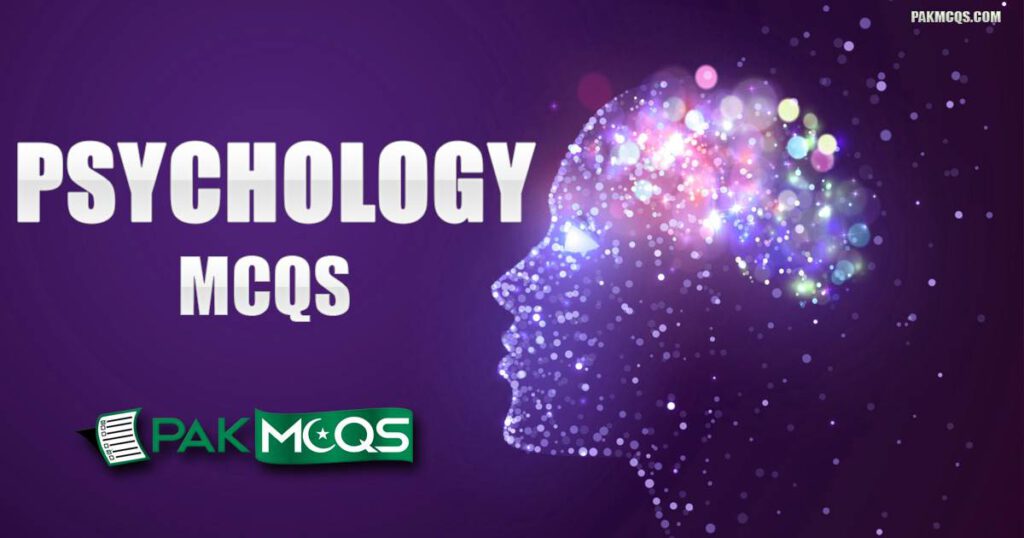A. Cannot be memorized
B. Can be remembered till long
C. Can easily be forgotten
D. Are a source of fun for children
Psychology Mcqs
Psychology Mcqs for Preparation – These Multiple Choice Questions are important for Lecturer Psychology, Clinical psychologist, Counselling psychologist, Educational psychologist and Forensic psychologist Jobs tests. Psychology Mcqs questions are very important for all type of exams conducted by Fpsc, Nts, Kppsc, Ppsc, Spsc, Bpsc, Ots, Uts, Pts, Cts, Ats, etea and other testing agencies of Pakistan.
| PSYCHOLOGY MCQS | |||
|---|---|---|---|
| 1. Introduction to Psychology | 2. Emotions | ||
| 3. Therapy | 4. Memory | ||
| 5. Intelligence | 6. Infancy And Childhood | ||
| 7. Health Psychology | 8. Forensic Psychology | ||
| 9. Branches of Psychology | 10. Attitudes, Attributions And Social Cognition | ||
| 11. Adolescence And Adulthood | 12. Abnormal Psychology | ||
| 13. Social Psychology | 14. Sensation And Perception | ||
| 15. Research Methods | 16. Psychology Theories | ||
| 17. Psychological Disorders and their Treatment | 18. Personality | ||
| 19. Organizational Psychology | 20. Nervous System | ||
| 21. Motivation | 22. Methods and Approaches | ||
| 23. Methodology | 24. Major Thinkers in Psychology | ||
| 25. Learning | 26. Language And Thought | ||
| 27. Interpersonal Relations And Group Processes | 28. Industrial Psychology | ||
| 29. Educational Psychology | 30. Developmental Psychology | ||
| 31. Criminal Psychology | 32. Coordination | ||
| 33. Cognitive Psychology | 34. Biological Foundations of Behavior | ||
| 35. Miscellaneous Psychology | 36. | ||
A. The selection of an activity
B. The adoption of an activity
C. The understanding of an activity
D. All of the above
A. Two stimuli being paired that produce a conditioned response over time
B. An organism interacting with its environment, becoming changed by experience, and thereby modifying subsequent behaviours
C. An organism interacting with its environment through autoshaping and conditioning
D. An organism responding to its environment based on reinforcement or punishment for behaviours
E. The effect of parents, teachers and peers
A. A snail experiences a brief jolt of the surface on which it is crawling and reacts by reacting into its shell. Subsequent jolts however, are found to be less effective in inducing withdrawal, until the reaction finally disappears
B. The first conspicuous moving object seen by a newly hatched chick is a laboratory attendant. As a consequence, the chick develops an attachment to that person, approaching and following him or her, and tending to avoid other things
C. A rat is given access to a distinctively flavoured foodstuff that has been lanced with a small amount of prison, enough to induce nausea but not enough to kill. On recovering from its illness however, the rat will still go back to the flavour
D. A hungry pigeon is given a small amount of food each time it happens to make a turn in a particular direction. After experiencing a few rewards, the bird develops an increasing tendency to circle on the spot in the ‘correct’ direction
A. Conditioned stimuli
B. Unconditioned stimuli
C. Change
D. Association
E. All of the above
A. Unconditioned stimulus, conditioned response, conditioned stimulus, unconditioned response
B. Conditioned stimulus, conditioned response, unconditioned stimulus, unconditioned response
C. Unconditioned stimulus, conditioned stimulus, unconditioned response, conditioned response
D. Unconditioned stimulus, unconditioned response, conditioned stimulus, conditioned response
E. Conditioned response, conditioned stimulus, unconditioned response, unconditioned stimulus
A. The UR and CR are not always the same response
B. Organisms come to generally behave toward conditioned stimulus as they do unconditioned stimulus
C. Stimulus situation
D. The UR and CR are always the same response
E. (a), (b) and (c)
A. The law of effect relates to Pavlov’s proposal that reward will strengthen the connection between the response that preceded it and any stimuli present when it is delivered
B. In modern terminology, Thorndike’s ‘satisfiers’ and ‘annoyers’ are called enforces and punishers
C. In the law of effect, a stimulus-response (S-R) association is learned
D. It is generally thought that the likelihood of an animal responding in a particular way cannot be controlled by the consequence of the response
A. Salivation and responses to light
B. Illness-induced aversions and phobias
C. Nausea and headaches
D. (a),(b) and (c)
E. None the above
A. Contiguity and conditioning
B. Habituation and contiguity
C. Blocking and preparedness
D. Blocking and autoshaping
E. Preparedness and conditioning


